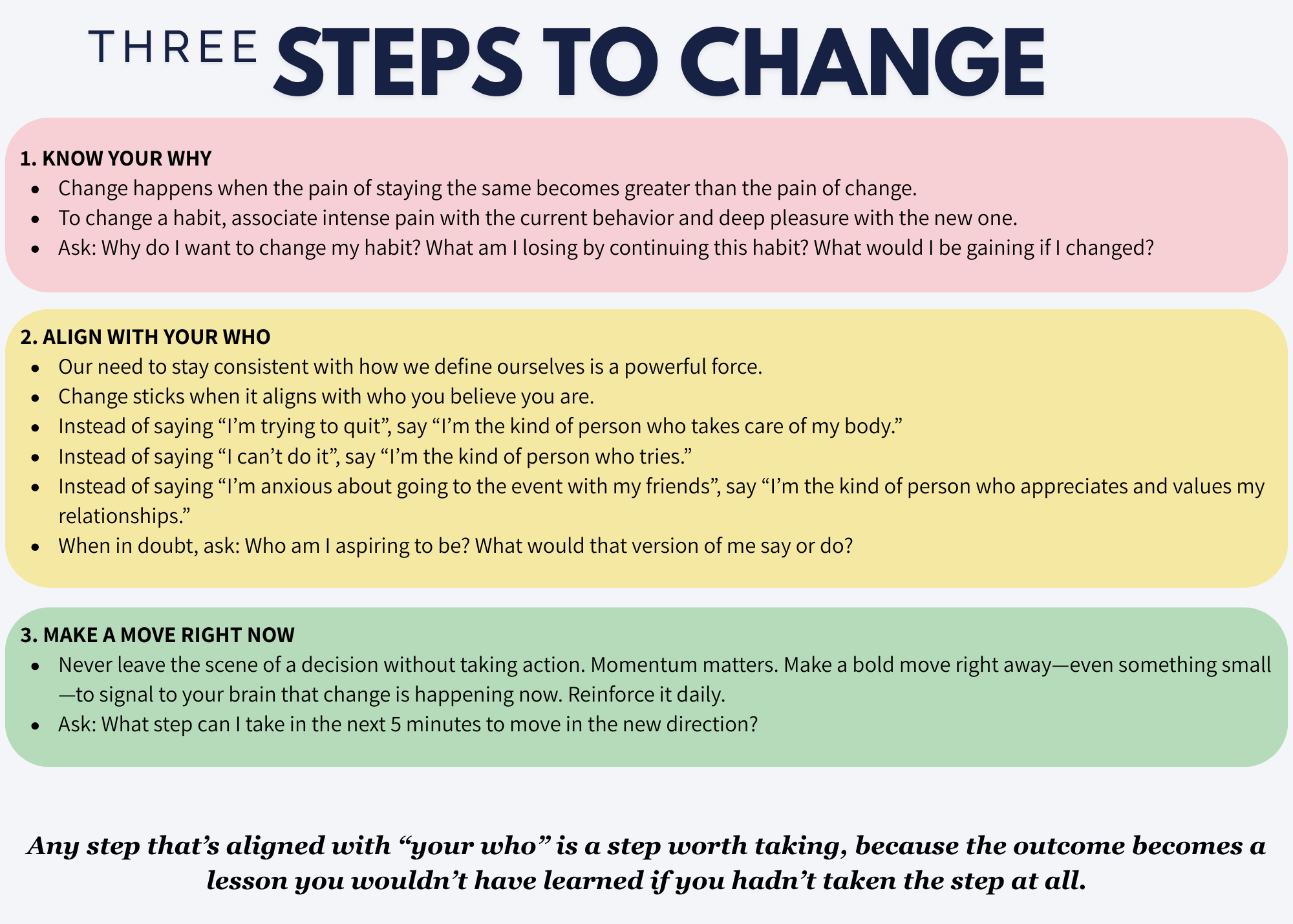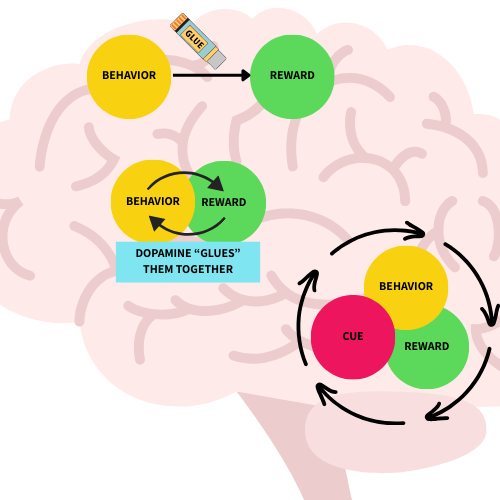Three Steps to Change
1. KNOW YOUR WHY
Change happens when the pain of staying the same becomes greater than the pain of change. To change a habit, associate intense pain with the current behavior and deep pleasure with the new one. Tune in to why this matters to you. Instead of jumping straight to action, connect with your values. Don’t do it because you "should." Find a reason that makes sense to you.
Ask yourself:
Why do I want to change my habit?
What bothers me about this habit?
What do I wish felt different?
What am I losing by continuing this habit?
What would I be gaining if I changed?
“What’s the real cost of staying the same?”
2. ALIGN WITH YOUR WHO
Our need to stay consistent with how we define ourselves is a powerful force. Change sticks when it aligns with who you believe you are.
Instead of saying “I’m trying to quit”, say “I’m the kind of person who takes care of my body.”
Instead of saying “I can’t do it”, say “I’m the kind of person who tries.”
Instead of saying “I’m anxious about going to the event with my friends”, say “I’m the kind of person who appreciates and values my relationships.”
When in doubt, ask yourself:
Who am I aspiring to be?
What would that version of me say or do?
3. MAKE A MOVE RIGHT NOW
Never leave the scene of a decision without taking action. Momentum matters. Start small and build momentum. Let your why power your how. Choose one tiny, doable action and build from there. Make a move right away—even something small—to signal to your brain that change is happening now.
Ask yourself:
What step can I take in the next few minutes to move in the new direction?
“Change doesn’t start big—it starts as small as it needs to be.”

Neuroscience of Habits
Habits are automatic behaviors formed through repeated actions and reinforced neural pathways. In the brain, the basal ganglia plays a central role in habit formation, particularly the dorsal striatum, which supports cue-response patterns. When a behavior is repeated in a consistent context, the brain begins to "chunk" it—linking the cue, routine, and reward—so it requires less conscious effort over time. Meanwhile, dopamine strengthens the association between actions and rewards, increasing the likelihood of repeating the behavior.
As habits form, control shifts from the prefrontal cortex (involved in deliberate decision-making) to more automatic processing circuits, making habits feel almost involuntary.

How to Change a Habit Using Neuroscience
Identify the cue and reward: Pinpoint what triggers the habit and what reward it provides (e.g., relief, stimulation, social connection).
Change the routine: Keep the same cue and reward, but swap in a new behavior that is more adaptive. This interrupts the existing loop while preserving the brain’s learned structure.
Repeat and reinforce: Practice the new behavior consistently in the same context. With repetition, the brain rewires, creating new circuits and weakening the old habit.
Mindfulness: Engaging the prefrontal cortex through conscious reflection, implementation intentions (“If X happens, I will do Y”), and mindfulness helps override default patterns and promotes lasting change.
This post was reviewed by a licensed mental health professional.